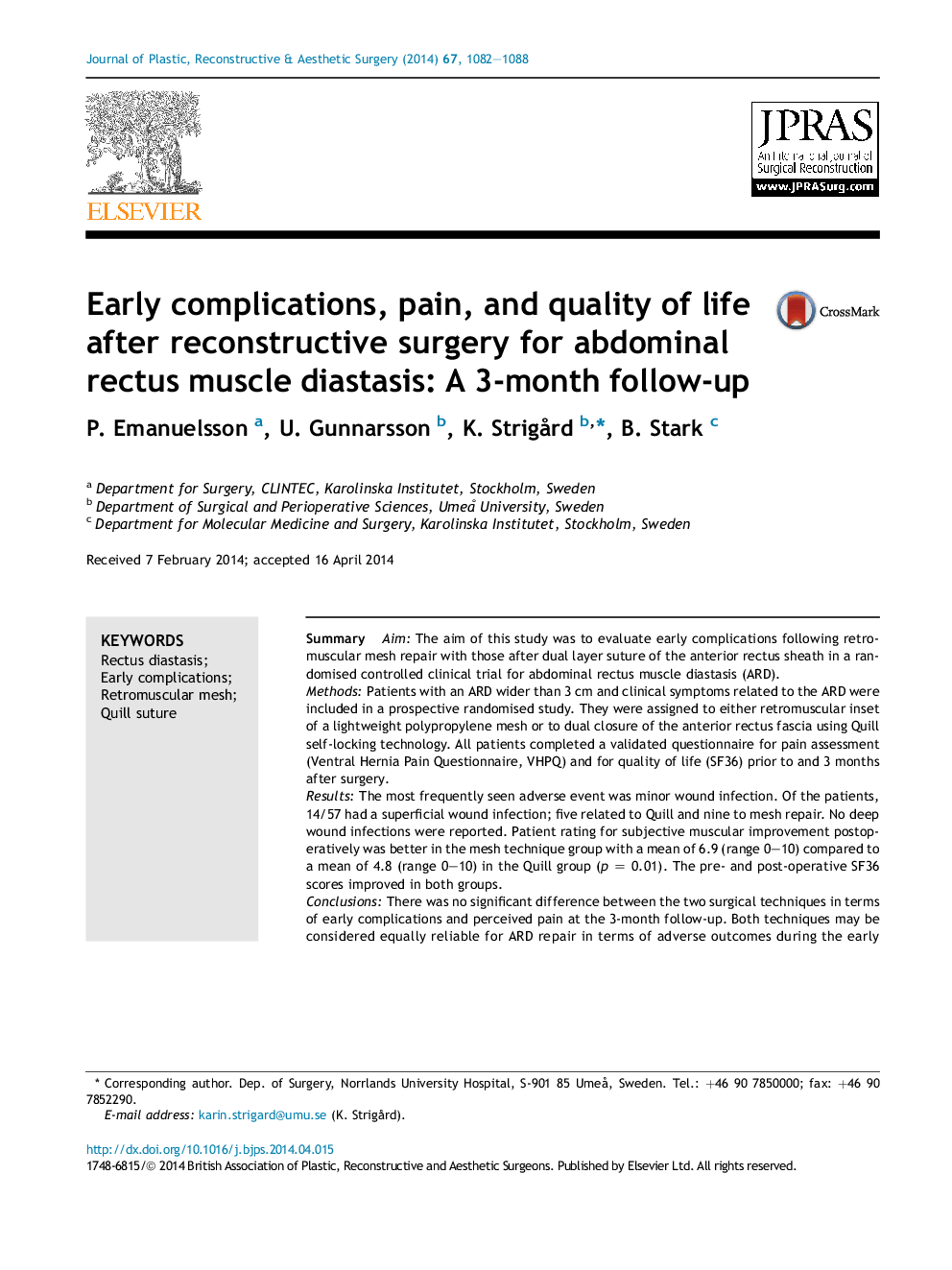| Article ID | Journal | Published Year | Pages | File Type |
|---|---|---|---|---|
| 6214713 | Journal of Plastic, Reconstructive & Aesthetic Surgery | 2014 | 7 Pages |
SummaryAimThe aim of this study was to evaluate early complications following retromuscular mesh repair with those after dual layer suture of the anterior rectus sheath in a randomised controlled clinical trial for abdominal rectus muscle diastasis (ARD).MethodsPatients with an ARD wider than 3 cm and clinical symptoms related to the ARD were included in a prospective randomised study. They were assigned to either retromuscular inset of a lightweight polypropylene mesh or to dual closure of the anterior rectus fascia using Quill self-locking technology. All patients completed a validated questionnaire for pain assessment (Ventral Hernia Pain Questionnaire, VHPQ) and for quality of life (SF36) prior to and 3 months after surgery.ResultsThe most frequently seen adverse event was minor wound infection. Of the patients, 14/57 had a superficial wound infection; five related to Quill and nine to mesh repair. No deep wound infections were reported. Patient rating for subjective muscular improvement postoperatively was better in the mesh technique group with a mean of 6.9 (range 0-10) compared to a mean of 4.8 (range 0-10) in the Quill group (p = 0.01). The pre- and post-operative SF36 scores improved in both groups.ConclusionsThere was no significant difference between the two surgical techniques in terms of early complications and perceived pain at the 3-month follow-up. Both techniques may be considered equally reliable for ARD repair in terms of adverse outcomes during the early postoperative phase, even though patients operated with a mesh experienced better improvement in muscular strength.ClinicalTrial.gov: 2009/227-31/3/PE/96.
